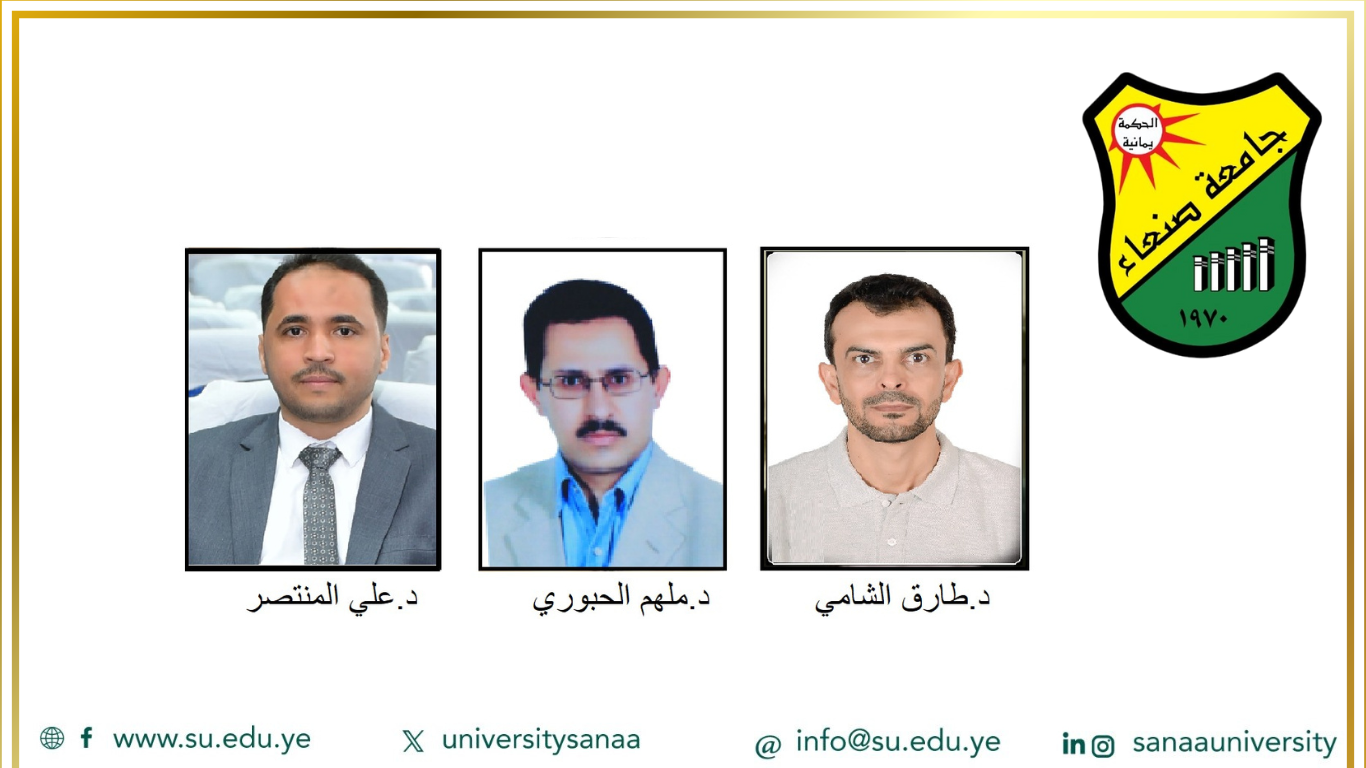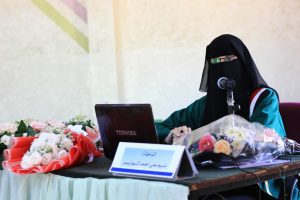University Rector Congratulates Three Scholars and Rewards them for Excellence Among the Top 2% of Scientists Worldwide

![]()
Prof. Al-Kasem Mohammed Abass, the Rector of Sana’a University, has congratulated three of the University’s scholars and faculty members: Dr. Tareq Al-Shami, from the Faculty of Education; Dr. Molham Al-Habori, from the Faculty of Medicine and Health Sciences; and Dr. Ali Al-Muntaser, from the Faculty of Education and Applied Sciences – Arhab. These distinguished individuals have achieved top rankings among Yemeni researchers on Stanford University’s list of the top 2% of the world’s most cited scientists across various disciplines, based on Scopus database metrics.
The University Rector has instructed the relevant administration to prepare for a formal recognition ceremony to honor and encourage these exceptional individuals for their outstanding academic contributions, which reflect positively on their personal success and the reputation of Sana’a University. He emphasized that promoting research is a paramount priority for Sana’a University and that recognizing and encouraging research scholars is a core focus of the University’s leadership.
Sana’a University has once again demonstrated its leadership in academic excellence, with three prominent scholars ranking at the top among Yemeni researchers. Dr. Tareq Al-Shami, a faculty member at the Faculty of Education, has secured the first position in the lifetime citation rankings for researchers, with an impressive record of 136 publications between 2018 and 2024. He ranks 185,367 globally, amassing a total of 1,208 citations and achieving an h-index of 20. In the composite index for his subfield of general mathematics and the broader area of mathematics and statistics, he has a score of 3.2220.
Additionally, Dr. Al-Shami ranked first among the most cited researchers for the year 2023, with a ranking of 9,805. He authored 136 papers, received 588 citations, and recorded an h-index of 13 for 2023, achieving a composite index score of 3.4481. This remarkable achievement underscores his significant contributions to the field and highlights the ongoing commitment to research excellence at Sana’a University.
In addition, Dr. Molham Al-Habori, a faculty member at the Faculty of Medicine and Health Sciences at Sana’a University, has secured the third position among Yemeni researchers on the aforementioned list, excelling in the category of most cited researchers over their careers. He has published 51 papers from 1991 to 2024, ranking 206,623 globally. Dr. Al-Habori has garnered 2,091 citations and achieved an h-index of 22 for 2023. His composite index score in the subfield of medical biochemistry and the broader area of clinical medicine is 3.1755.
At the same time, Dr. Ali Al-Montaser, a faculty member at the College of Education and Applied Sciences in Arhab, claimed the eleventh position in the list of the most cited Yemeni researchers in the 2023 Stanford University list of the top 2% most cited scientists in the world. With 32 publications between 2018 and 2024, he ranked 326,172, accumulating 197 citations, an h-index of 8, and a composite indicator of 2.2831 in the sub-field of applied physics and the broader field of physics and astronomy.
It is noteworthy that the list of the top 2% most-cited scientists is considered one of the most important tools for evaluating the scientific impact of researchers. This list is based on comprehensive data from the Scopus database and ranks scientists based on a set of indicators such as the number of citations, which relies on the h-index, and the composite c-score.
The h-index is an indicator used to measure both the productivity and citation impact of published scientific research. It assesses the number of citations received by a researcher’s publications, providing a dual measure of productivity and dissemination impact. The h-index focuses on the number of citations each paper has received from other researchers.
The utility of this metric lies in its ability to enhance the quality of scientific research, as it accounts for both the number of published papers and their citations. Importantly, the h-index compares research within the same discipline, isolating each field to ensure relevant comparisons. Many reputable universities have adopted the h-index as a fundamental criterion for academic promotion.
The composite score (c-score), on the other hand, evaluates scientific impact regardless of the number of publications, taking into account the varying authorship roles, such as first or last author, in published research. This comprehensive approach allows for a more nuanced understanding of each researcher’s contributions to their field.





